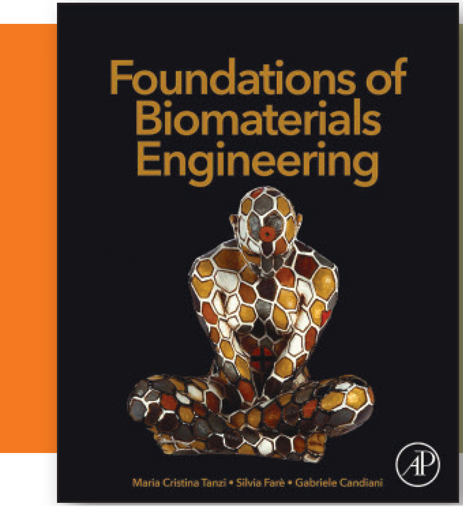
Biomaterials have made extraordinary advances in the past few decades and have greatly benefited healthcare technologies such as regenerative medicine, drug delivery, and gene therapy. This book is timely in bringing materials science, mechanics, design/manufacturing, and biomedical science all together in a logical and concise manner for an improved understanding of biomaterial properties and engineering techniques. It came about as a result of rich experiences gained by the three authors in the area of industrial bioengineering. It includes extensive illustrations, detailed equations, and rigorous flowcharts to clearly demonstrate the broad applicability of biomaterials for a wide range of healthcare-related applications.
The book is composed of two sections: Section A presents an introduction of materials, and Section B focuses specifically on the properties of biomaterials and their utilities inside the body. This transition allows the reader to first gain an overview of the fundamentals of materials science before delving into biomaterials engineering through a natural flow.
Section A contains three chapters that focus on materials fundamentals. Specifically, Chapter 1 presents the structure and physics of different classes of materials, including metals, ceramics, and composites, with an emphasis on polymers, including a discussion on classification and synthesis of hydrogels. In Chapter 2, a strong analysis is developed on the mechanical properties of materials and biological materials, and includes a discussion of a variety of mechanical tests to assess materials deformation under loading. In Chapter 3, a compact overview of traditional and advanced manufacturing techniques is presented. Some of the emerging techniques in the field of biomaterials fabrication are also discussed.
In Section B, the authors focus on biomaterials and their applications. A wide range of synthetic and natural biomaterials are introduced. Chapter 4 includes a thorough presentation on synthetic polymers, such as polyesters and polyurethanes, as well as natural polymers, including proteins and polysaccharides, followed by metallic, ceramic, and composite materials that are used specifically in biological and biomedical applications.
In Chapter 5, two key unique features of biomaterials and bioimplants—sterility and degradation mechanisms—are presented. Different sterilization techniques are introduced, and this is a key parameter to consider in transitioning biomaterials from benchtop to bedside.
Chapter 6 focuses on the interaction between biomaterials and cells/tissues. Foreign body responses, biofilm formation, and biocompatibility assessment are discussed, followed by characterization and analysis techniques of biomaterials in Chapter 7. A panel of medical imaging techniques, including x-ray-based radiography, magnetic resonance imaging, and ultrasound, are presented in the diagnosis and treatment of diseases.
The authors indicate that this book is primarily written for undergraduates, whereas it is truly a comprehensive and approachable reference for any graduate student or research scientist interested in the topic of biomaterials engineering without prior knowledge. It lays down a solid scientific and engineering foundation for the understanding and future development of the design and manufacturing of biomaterials for biomedical applications and would be of interest to those in materials science, mechanical engineering, biomedical engineering, chemistry, and medicine.



